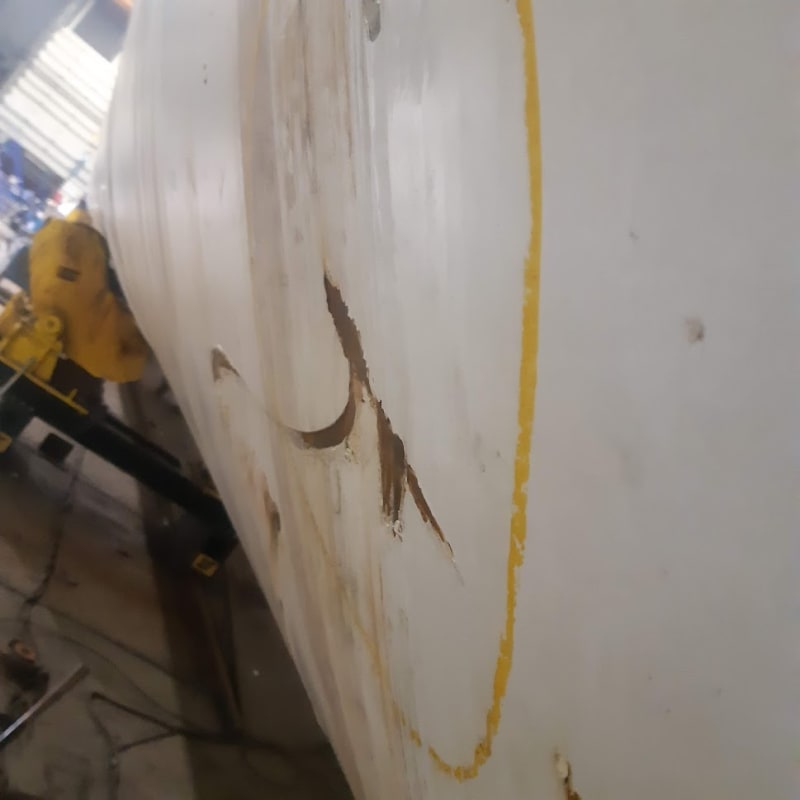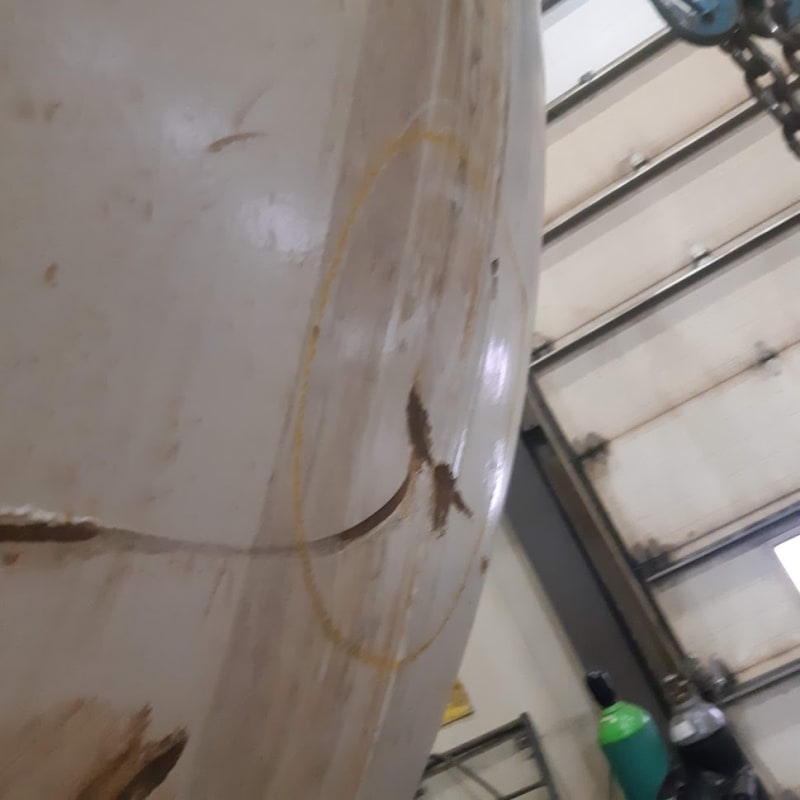Good morning,
I'm trying to write a procedure for deformation (dent) repairs that will be acceptable to the NBIC and Section VIII Div 1. My plan is to gather as much information as possible and present in to our Authorized Inspector for review so that in future cases we won't be restarting an investigation into the viability of heating and forming vessel walls to correct them.
I understand that every case is different, This is the parameters I'm restricting this procedure to;
The dents are unacceptable, API-579, Sec VIII div 1, NBIC and/or client.
The dents are not coming out without being heated.
The material is carbon steel under .25% carbon (validated by mill test or chemical analysis).
The thickness is .5" to 1" thick.
The dent is in a pressure boundary.
No impact tests are required.
We have not exceeded 5% fiber elongation.
I want to avoid cutting out and patching a pressure retaining item.
For P1 materials I feel like there is some Code guidance using UCS-79 and UCS-85,
1) Heat material to forging temp.
2) Use hydraulic jack to remove the dent.
3) Let the material air cool
4a) We hydro and are done.
For material other than P1 (but still carbon steel). A lot less Code guidance.
1) Heat material to forging temp.
2) Use hydraulic jack to remove the dent.
3) Let the material air cool.
4) Heat a test specimen up to forging temp, let it air cool.
5) Heat-treat test specimen per UCS-56.
6) Send test specimen to be mechanically tested as per the criteria of sec IIA.
5) Assuming the test specimen is accepted we heat treat to UCS-56 hydro and are done.
One things I'm stuck on.
A) UCS-79(b) Carbon and low alloy steel plates shall not be formed cold by blows.
I'm trying to write a procedure for deformation (dent) repairs that will be acceptable to the NBIC and Section VIII Div 1. My plan is to gather as much information as possible and present in to our Authorized Inspector for review so that in future cases we won't be restarting an investigation into the viability of heating and forming vessel walls to correct them.
I understand that every case is different, This is the parameters I'm restricting this procedure to;
The dents are unacceptable, API-579, Sec VIII div 1, NBIC and/or client.
The dents are not coming out without being heated.
The material is carbon steel under .25% carbon (validated by mill test or chemical analysis).
The thickness is .5" to 1" thick.
The dent is in a pressure boundary.
No impact tests are required.
We have not exceeded 5% fiber elongation.
I want to avoid cutting out and patching a pressure retaining item.
For P1 materials I feel like there is some Code guidance using UCS-79 and UCS-85,
1) Heat material to forging temp.
2) Use hydraulic jack to remove the dent.
3) Let the material air cool
4a) We hydro and are done.
For material other than P1 (but still carbon steel). A lot less Code guidance.
1) Heat material to forging temp.
2) Use hydraulic jack to remove the dent.
3) Let the material air cool.
4) Heat a test specimen up to forging temp, let it air cool.
5) Heat-treat test specimen per UCS-56.
6) Send test specimen to be mechanically tested as per the criteria of sec IIA.
5) Assuming the test specimen is accepted we heat treat to UCS-56 hydro and are done.
One things I'm stuck on.
A) UCS-79(b) Carbon and low alloy steel plates shall not be formed cold by blows.
- The process that created the dent can be considered cold forming. Everything stops here the only acceptable option is a patch.
The questions are;
A1) Is this acceptable to meet the Codes mentioned?
A2) Forget the Codes, does this make sense from a metallurgy and engineering stand point?
The questions are;
A1) Is this acceptable to meet the Codes mentioned?
A2) Forget the Codes, does this make sense from a metallurgy and engineering stand point?


